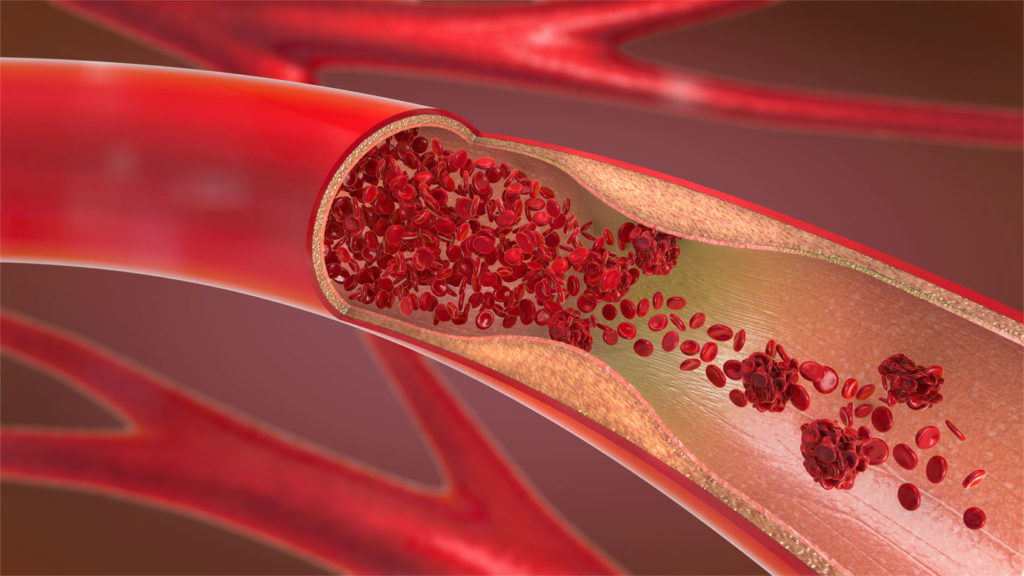- Doppler Ultrasound is often the first step in testing blood flow for patients complaining of leg pain. Doppler ultrasound uses sound waves to evaluate blood as it flows through the blood vessels.
- Duplex Ultrasound is an additional test that your healthcare provider may request if the Doppler ultrasound results are abnormal. The Duplex uses ultrasound technology to look at the artery and find the blockage that is causing the decreased blood flow.
- Ankle-Brachial Index (ABI) is a very simple and non-invasive test used to diagnose vascular conditions. It compares the blood pressure in your ankle to the blood pressure in your arm, looking for any discrepancy.
- Toe Pressures use an infrared sensor to determine the small vessel vascular condition in relation to the ankle. Toe pressures are useful in determining whether you may have unsuspected vascular disease
Your DVT treatment depends on the exact form and severity of your condition. Treatment options may include wound care, anticoagulant medications, compression garments/stockings, elevation, outpatient treatments, and/or surgery.
{,}show_first{:}{|}tab_name{:}When to See a Vascular Specialist{,}tab_content{:}If you have leg pain or blood clot symptoms, don’t wait for an emergency to occur before seeking a diagnosis. There are many noninvasive and nearly pain-free treatments for DVT that can limit further damage and support your body-wide health. Simply schedule a consultation with Maryland Vascular Specialists today.
{,}show_first{:} )Deep Vein Thrombosis (DVT)
Deep Vein Thrombosis (DVT)
Every year in the U.S., about 1 in 1000 people develop deep vein thrombosis (DVT). Over the course of your lifetime, you have as much as a 2% to 5% chance of developing the condition whether you are aware of having it or not.
DVT is a venous condition that affects blood flow to the veins, especially in your legs. When blood pools and clumps deep within your body, a blockage can restrict free blood flow and begin to slow the normal functioning of your organs and systems.
As DVT progresses, it limits the vital blood flow to your brain, heart, and lungs. You are at risk of a blood clot - also known as a thrombus - breaking loose, moving through your veins, and clogging a vital organ so that it can no longer function properly.
When the clots and clogs created by DVT become a medical emergency, you must receive urgent care to restore proper blood flow. Call 911 immediately if you feel the symptoms of DVT, which are described in detail below.
Why is a Blood Clot in Your Legs a Serious Health Risk?
A blood clot in the leg must be taken seriously because it affects your entire body’s ability to function. Your legs are the blood pumps of your body, and when those pumps malfunction your organs stop receiving the full nourishment they need from your blood.
Although you can’t necessarily see or feel a blood clot, it can begin doing silent damage over time. You may only become aware of your health condition when you have a sudden health emergency, like a stroke.
DVT is both a common cause of strokes and a common post-stroke occurrence due to the immobility stroke patients often face. Long periods of sitting or standing motionlessly can contribute to the development of blood clots and the worsening of DVT.
For example, frequent airplane travelers who spend long periods of time sitting are at a higher risk than the average person. So are long-distance truckers and others who spend extended time sitting in their vehicles or chairs.
Symptoms of DVT
Leg pain is common with DVT and is definitely leg pain you should not ignore. Here are the common signs of a blood clot:
- Swelling and/or pain in one or both of your legs
- Discoloration or redness in your leg skin
- Warm or hot feelings in your leg
- Throbbing in your leg or a feeling of heaviness
In addition to blood clot symptoms, you could develop a serious condition known as a pulmonary embolism. Seek emergency medical care immediately if you have:
- Chest pain
- Fast pulse
- Shortness of breath or inability to breathe
- Faintness or lightheadedness
- Coughing up blood
Early detection is the key to keeping DVT from becoming a life-threatening emergency. To determine whether your symptoms mean you have DVT, request a consultation with Maryland Vascular Specialists for an expert examination.
To diagnose and treat deep vein thrombosis, your doctor at Maryland Vascular Specialists may start by performing a variety of non-invasive vascular diagnostic tests. Your regular healthcare provider could also order these tests from an accredited vascular lab.
Diagnostic techniques could include any of the following:
- Doppler Ultrasound is often the first step in testing blood flow for patients complaining of leg pain. Doppler ultrasound uses sound waves to evaluate blood as it flows through the blood vessels.
- Duplex Ultrasound is an additional test that your healthcare provider may request if the Doppler ultrasound results are abnormal. The Duplex uses ultrasound technology to look at the artery and find the blockage that is causing the decreased blood flow.
- Ankle-Brachial Index (ABI) is a very simple and non-invasive test used to diagnose vascular conditions. It compares the blood pressure in your ankle to the blood pressure in your arm, looking for any discrepancy.
- Toe Pressures use an infrared sensor to determine the small vessel vascular condition in relation to the ankle. Toe pressures are useful in determining whether you may have unsuspected vascular disease
Your DVT treatment depends on the exact form and severity of your condition. Treatment options may include wound care, anticoagulant medications, compression garments/stockings, elevation, outpatient treatments, and/or surgery.
If you have leg pain or blood clot symptoms, don’t wait for an emergency to occur before seeking a diagnosis. There are many noninvasive and nearly pain-free treatments for DVT that can limit further damage and support your body-wide health. Simply schedule a consultation with Maryland Vascular Specialists today.
